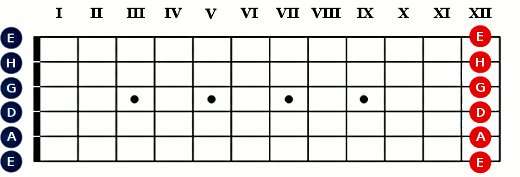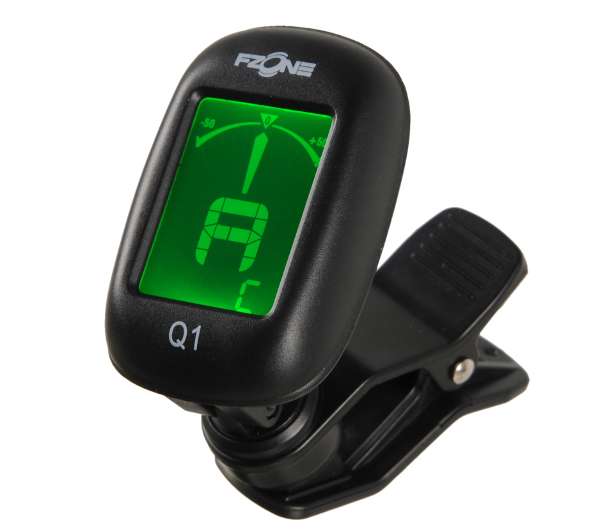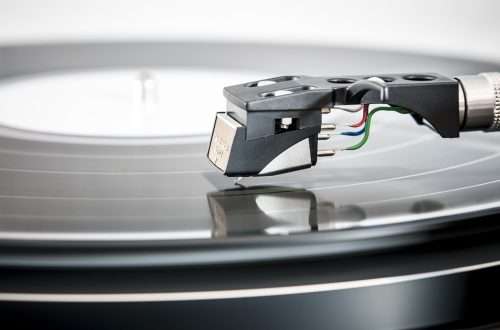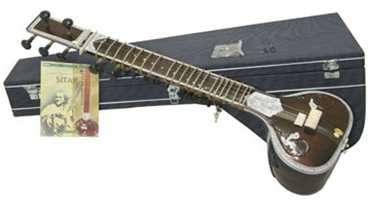
Guitar tuning
A detuned guitar is a bit like a crazy singer – you’ll never predict what the sound will hit. As aspiring guitarists, we cannot afford it. Today you will learn three ways, thanks to which you will be able to quickly tune your instrument yourself. Let’s start!
The names of each string correspond to the pitch you can produce by hitting each one blank. See the diagram for the note nomenclature of the standard pitch for a six-string guitar.

ELECTRONIC OR DIGITAL RUNNER When using a tuner, you have two options. You can use it in automatic or manual mode. In the former, the reed recognizes the sounds played by itself, displaying their name on the screen. On the other hand, the second one requires you to specify the sound to which you will tune a given string.
In both cases the procedure is similar: 1. Strike the string, making sure that it is empty, i.e. you are not pressing it on any fret 2. Look at the reed indication – with the help of the indicator or LEDs it will determine the pitch of the currently sounding note (remember that must be in a relatively quiet environment during this time) 3.Your task is to adjust the tension of each string so that the reed indicator is vertical and / or the green LED lights up

THE FIFTH THRESHOLD METHOD The feature of our instrument is that some sounds occur at the same frequency in different places on the neck. This allows us to compare their height and tune to each other. How can we use it?
1. To begin with, we need a reference point with which to tune the first string. This can be a piano sound or another guitar that has already been tuned. Let’s start with the E6 string. Gradually turn the key until you get the same sound. If you’re doing it for the first time – don’t give up. In a few days, this skill will enter your bloodstream and stay with you for the rest of your life. It’s worth the effort.
2. Place your finger on the V fret of the E6 string and make the note. Then yank the empty A5 string. They should make the same noise. If it is not, use the key to adjust the A string.
3. Do the same for the next two pairs of strings – A5 and D4, and D4 and G3. Adjust the tensions until the string sounds the same.
4. There is a slight exception to the G3 and B2 string pair. The procedure is the same, except that in this case you place your finger on the 3th fret of the GXNUMX string. If necessary, tune the empty string with the appropriate key.
5. For the last pair of B2 and E1, we return to the standard procedure using the note at the 2th fret of the BXNUMX string.
TUNING WITH FLAGS This is definitely my favorite method. Although it requires a bit more skill, I think it is not only simple, but also very accurate.
To bring out the natural veil, you need to gently place the finger of your left hand over the XNUMXth, XNUMXth or XNUMXth fret. Remember that after hitting the string, you have to quickly tear it off so that it does not muffle the sound produced. Flasolets can also be produced on other frets, using other techniques, and forced artificially, but the method described above is the simplest and best serves the issue discussed by us.
1. Find the reference point for the E6 string according to the first point of the fifth threshold method.
2. Gently touch the A5 string above the 6th fret, and with your other hand, raise the string until you hear a harmonic. Do the same over the 5th fret of the EXNUMX string. Compare the two notes and tune the AXNUMX string. Characteristically audible vibrations further facilitate this method.
3, In the same way, compare the harmonics for the string pairs A5 and D4 and D4 and G3. Fine tune them if required.
4. Various methods are used for the last pairs of strings. I suggest that you play an empty B2 string and compare it with the harmonic found on the 6th fret of the EXNUMX string.
5. The above method can be applied analogously to the E1 string. You can compare the empty one with the harmonic on the 5th fret of the AXNUMX string.
I hope that the above methods have dispelled all doubts about the topic of tuning a guitar. I strongly encourage you to use the “by ear” methods, because they also develop your hearing. I am curious what your favorite method is – be sure to write about it in the comments! Or maybe you have your own way?





